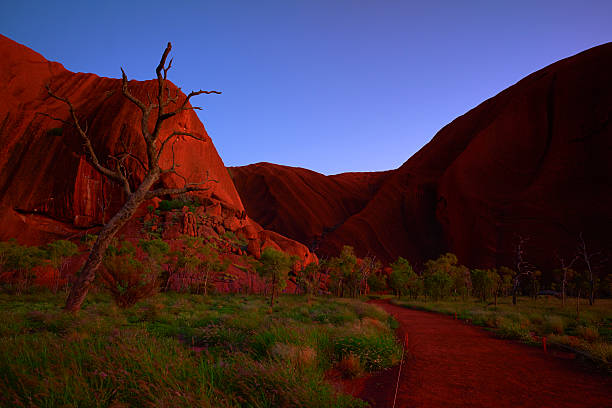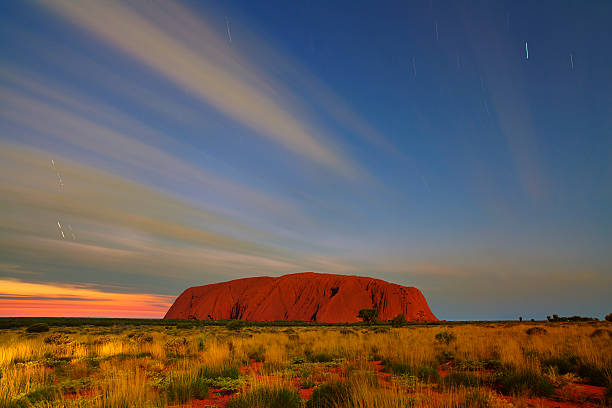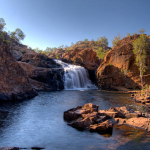When planning a trip to the heart of Australia to see the magnificent Uluru, a common question travelers ask is, “How many days are needed to fully explore this iconic site?” To truly experience the grandeur and significance of Uluru, also known as Ayers Rock, you should consider spending at least two to three days in the area. This allows for enough time to immerse yourself in its cultural history, take part in various tours and activities, and witness the breathtaking sunrises and sunsets that paint Uluru in an array of colors. This guide will delve into how you can maximize your time and plan an unforgettable 3-day Uluru tour that encompasses the essence of this ancient monolith.
Understanding Uluru and its Cultural Heritage

Uluru is not only a geological wonder but also a place of deep spiritual significance to the Anangu, the traditional owners of the land. Before delving into the itinerary of your visit, it’s paramount to understand the cultural heritage that makes Uluru a sacred site. Knowing the stories and customs can transform your experience from a simple sightseeing trip to a meaningful journey.
The Spiritual Significance of Uluru for Indigenous Australians
The Anangu people have lived near Uluru for thousands of years and consider it to be a central part of their Tjukurpa, or creation period. Many of the park’s natural features are associated with ancestral beings and are still used for cultural ceremonies today. Visitors are encouraged to respect the site by adhering to guidelines, not taking photographs in designated areas, and by no longer climbing the rock, a practice that was stopped on October 26, 2019, in recognition of Uluru’s sacred status.
Planning Your Itinerary: Key Factors to Consider
Creating an itinerary for your Uluru visit requires consideration of several factors. You’ll need to think about the best time of year to travel, accommodation options, and available activities. With careful planning, you can ensure a smooth and enriching experience.
Best Time of Year to Visit Uluru
Weather at Uluru can be extreme, with hot summers and cool winters. The best time to plan your visit would be during the milder months of April to September. During these months, the temperature is more conducive to outdoor activities, which will form a significant part of your Uluru experience.
Travel and Accommodation Options
The nearest town to Uluru is Yulara, which offers a range of accommodation options from campsites to luxury resorts. Depending on your budget and preferences, you should book accommodations well in advance to secure your spot, especially during peak tourist seasons.
Activities and Attractions Around Uluru
There are a variety of activities and attractions to fill your days at Uluru, from cultural walks led by Anangu guides to camel tours around the desert landscape. Don’t miss the informative cultural center, where you can learn more about the Anangu way of life and the natural habitat of Uluru-Kata Tjuta National Park.
Recommended Duration of Stay
While you can get a snapshot of Uluru in a single day, experts and past visitors recommend at least a two to three-day stay. A 3-day Uluru tour tends to offer a balanced experience, allowing you to see the landmark at different times of the day, engage with cultural activities, and explore nearby attractions without feeling rushed.
Making the Most of Your Time at Uluru
To fully appreciate the majesty of Uluru and the rich cultural tapestry that surrounds it, planning each day effectively is key. Here are some suggestions on how to structure your visit for an optimal experience.
Daily Itinerary Suggestions
Below are suggested itineraries to help you plan your 3-day Uluru tour, ensuring that you capture all the wonder that Uluru has to offer:
- Day 1: Start with the sunrise at Talinguru Nyakunytjaku viewing area, enjoy a leisurely base walk, and explore the cultural center.
- Day 2: Participate in a guided cultural tour, visit the Maruku Arts Gallery, and witness sunset at the designated viewing platform.
- Day 3: Explore the Kata Tjuta formation, take a scenic helicopter flight, and if time permits, join a dot painting workshop.
Tips for an Efficient and Fulfilling Visit
Consider the following tips to make the most of your time and to have an experience that is both efficient and fulfilling:
- Book tours and accommodations in advance to ensure availability.
- Pack plenty of water, sunscreen, and suitable clothing for desert weather.
- Respect the local customs and environmental guidelines throughout your stay.
Conclusion
In conclusion, visiting Uluru is an extraordinary experience that transcends mere tourism. To fully appreciate its grandeur and cultural resonance, a 3-day Uluru tour is recommended. By respecting local traditions, engaging with the Anangu culture, and exploring the landscape’s natural beauty, you can have a trip that lingers in your memory long after you’ve returned home. Plan wisely to embrace the mystical allure of this ancient monument and leave with a richer understanding of Australia’s spiritual heart.
Frequently Asked Questions About Visiting Uluru
| FAQ | Answer |
|---|---|
| Is one day enough to see Uluru? | One day is the minimum to see the highlights of Uluru, but a 2-3 day stay is more fulfilling. |
| Can you visit Uluru without a guide? | Yes, but a guide provides valuable cultural insight and knowledge. |
| Are any entry fees or permits required to visit Uluru? | Yes, a park pass is required to enter Uluru-Kata Tjuta National Park. |
| What should I not miss when visiting Uluru? | Sunrise and sunset views, cultural tours, and the base walk of Uluru are must-dos. |
| Is it possible to climb Uluru? | No, climbing Uluru is prohibited out of respect for Anangu cultural beliefs. |


